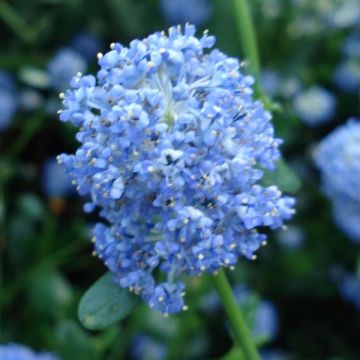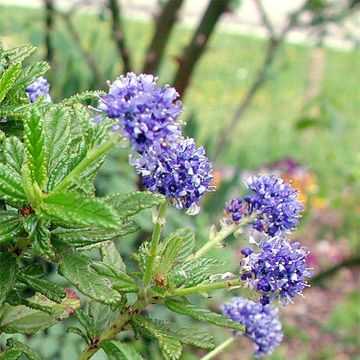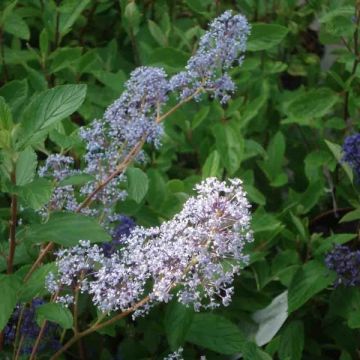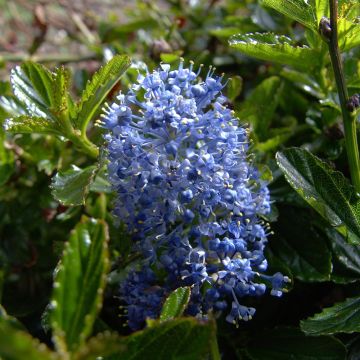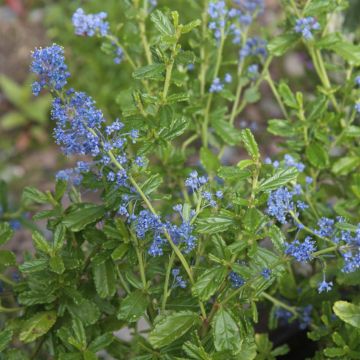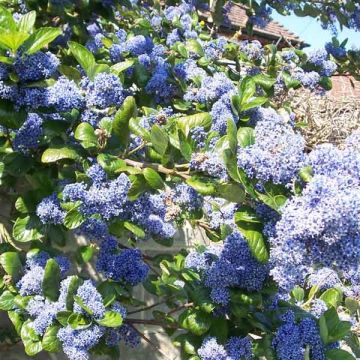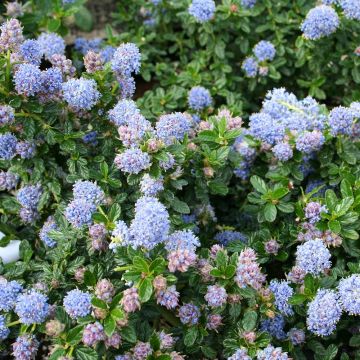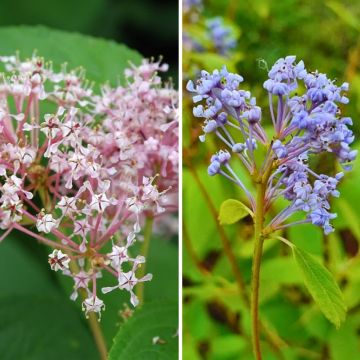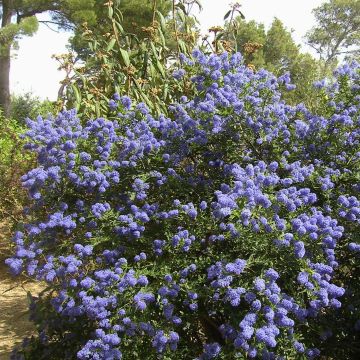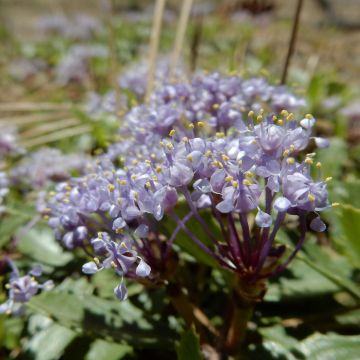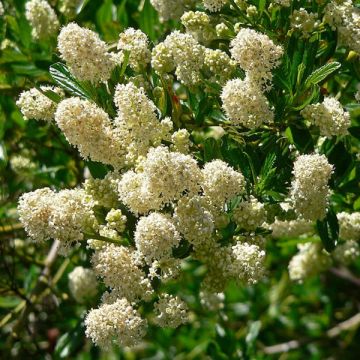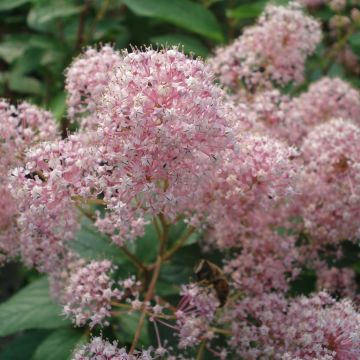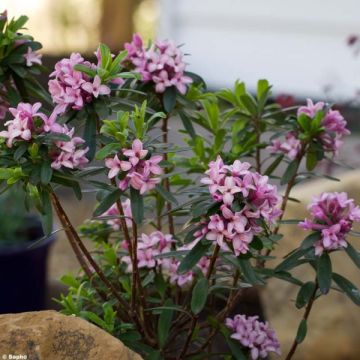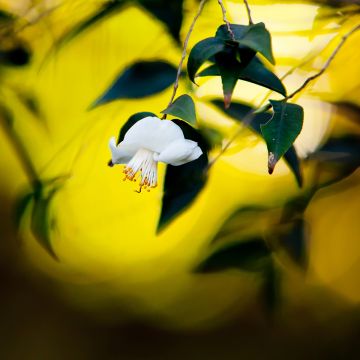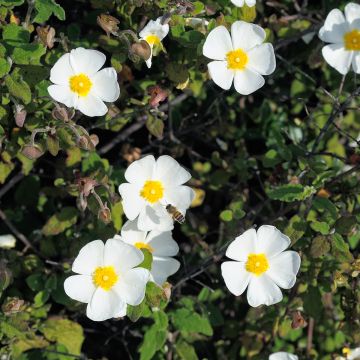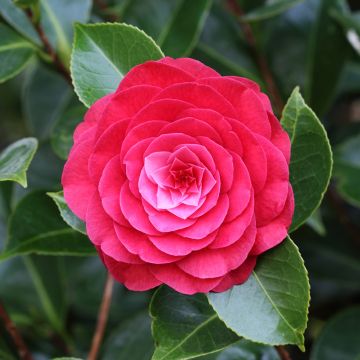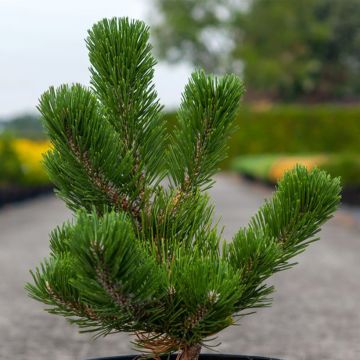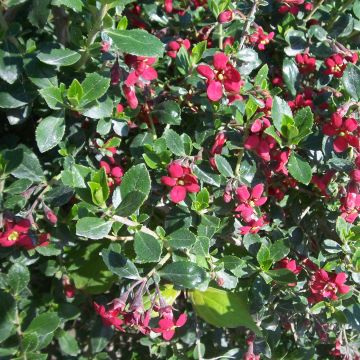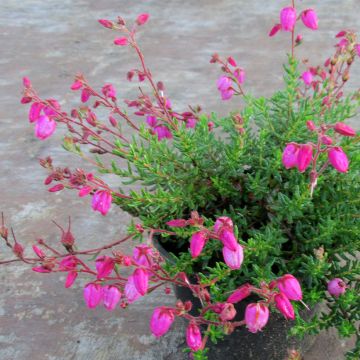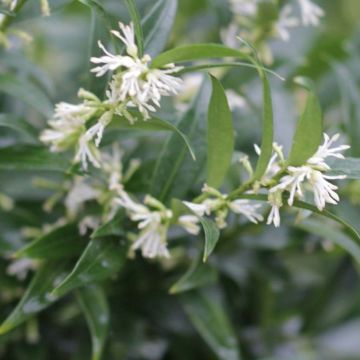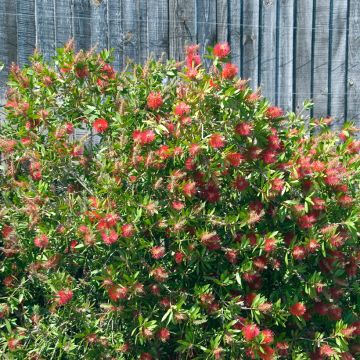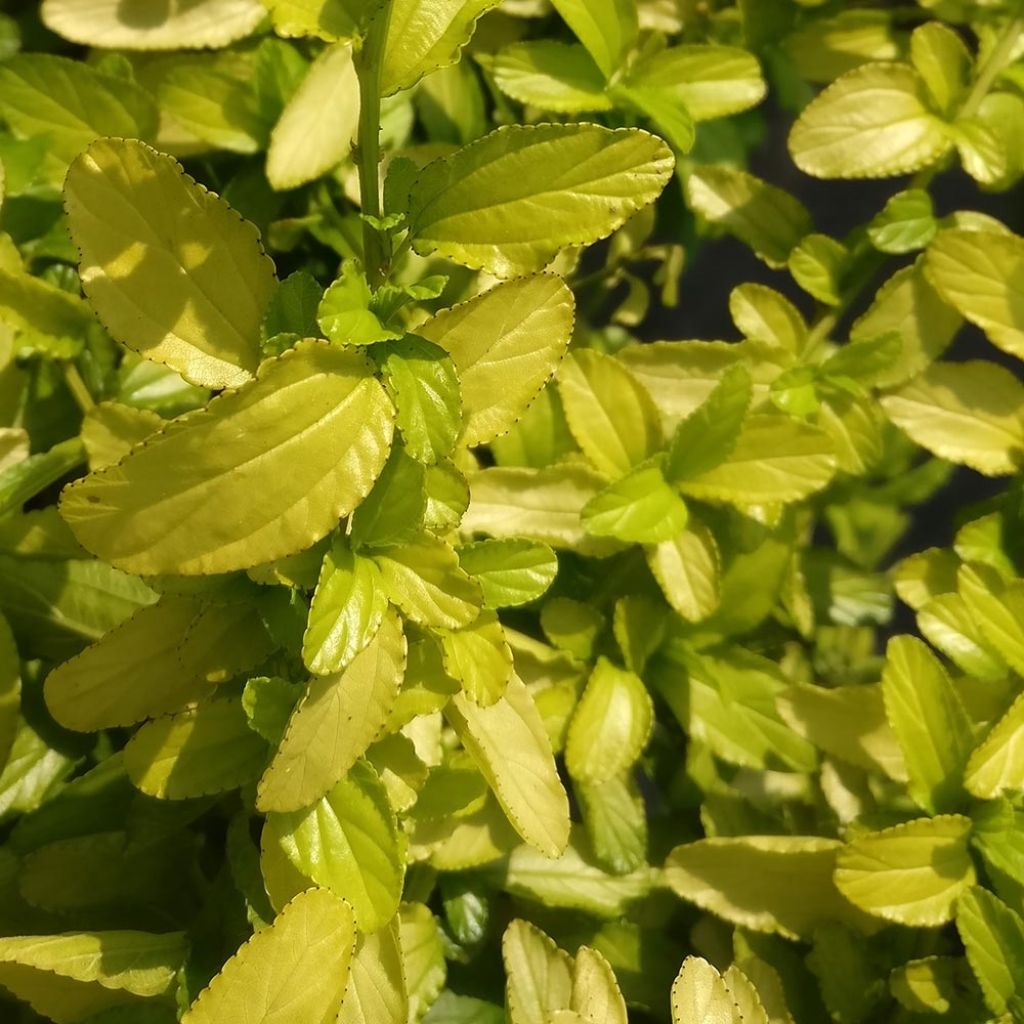

Ceanothus thyrsiflorus African Queen
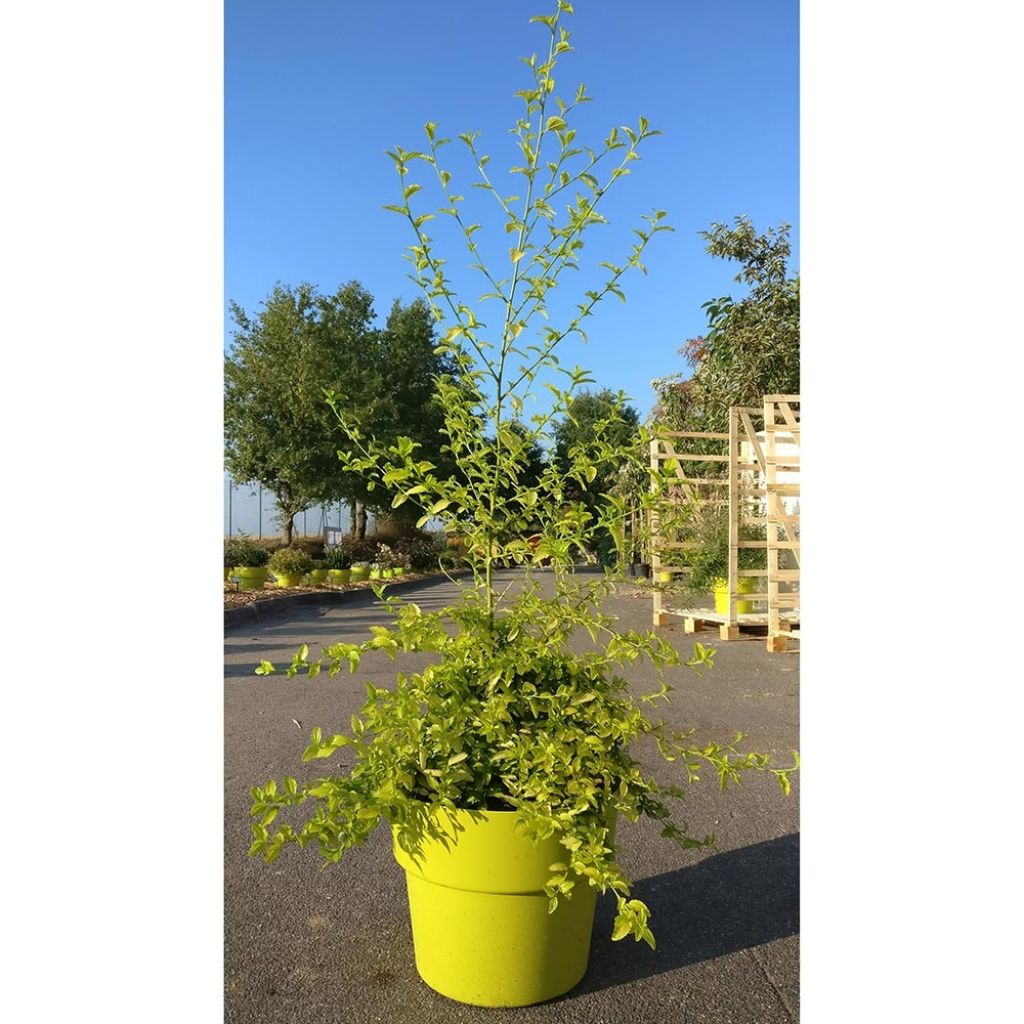

Ceanothus thyrsiflorus African Queen
Ceanothus thyrsiflorus African Queen
Ceanothus x thyrsiflorus California Love African Queen
California Lilac
Why not try an alternative variety in stock?
View all →This plant carries a 24 months recovery warranty
More information
We guarantee the quality of our plants for a full growing cycle, and will replace at our expense any plant that fails to recover under normal climatic and planting conditions.
From €5.90 for pickup delivery and €6.90 for home delivery
Express home delivery from €8.90.
Does this plant fit my garden?
Set up your Plantfit profile →
Description
Ceanothus 'African Queen' is part of a new generation of Californian Lilacs, named California Love, which stand out for their remarkably colourful foliage. This one has beautiful evergreen, golden-green foliage that is decorative in all seasons, forming a beautiful colour combination with its vibrant sky-blue spring flowers. This beautiful bush, with a rather upright habit, will fit in a seaside garden or in a climate that is not too cold. This selection thrives in well-drained soils, preferably non chalky or slightly chalky, tolerates summer drought and withstands short frosts of around -10°C (14°F) once established.
The African Queen Ceanothus is a hybrid horticultural variety that carries the genes of the Ceanothus thyrsiflorus. It is a vigorous species native to North America and Mexico, with a variable habit. Hardy down to -10°C (14°F), this shrub has characteristic angular branches and bears alternate, entire, toothed, leathery leaves with very pronounced veins. Ceanothus belong to the Rhamnaceae family, they are cousins of our buckthorn (Rhamnus cathartica), inhabitants of chaparral (scrub vegetation) that rely on rainwater once well rooted.
'African Queen' is a taller-than-wide bush, with branches that reach towards the sky. It is a densely branched and regular shrub that can reach 3m (9ft 10in) in height, with a spread of less than 2m (6ft 7in). Its generous flowering takes place in May-June, forming rounded clusters of 5-6 cm (2-2.4in) composed of numerous tiny light blue and vibrant flowers dusted with stamens. This fragrant flowering attracts many pollinating insects including butterflies and bees. It is followed by the formation of seeds which are explosively released. Its foliage is particularly decorative persisting in winter and consisting of alternate, ovate-oblong, strongly toothed and rather small leaves, about 3-4 cm (1.2-1.6in) long. They are yellow, tinged with acid green. Ceanothus flower on the previous year's wood and tolerate very light pruning of faded flowers and awkward branches just after flowering. Their average lifespan is 15 to 20 years.
Because it is difficult to resist the blue flowering of evergreen ceanothus, horticulturists have 'invented' new varieties of ceanothus in recent years that are easier to acclimatize and of more modest size, suitable for our gardens and terraces. The African Queen Ceanothus is a beautiful subject to plant in a seaside garden or in a dry garden in our mild regions. It can be placed as a standalone specimen, against a terrace, or in a mass of shrubs which will precede or follow its magnificent flowering: the Buddleia officinalis (pale pink, from February-March), the Fremontodendron californicum (April-May-June), the shrubby cistus (Cistus laurifolius, in May), or even the coronillas and China rose 'Mutabilis'. It blooms simultaneously with the Banks Lutea Plena rose and the combination of the butter yellow pompoms of the rose and the blue flowers of the ceanothus is incomparably lively. Its golden foliage throughout the seasons goes particularly well with purple or dark foliage, such as that of the Loropetalum Fire Dance or the Osmanthus heterophyllus Purpureus, for example.
Report an error about the product description
Ceanothus thyrsiflorus African Queen in pictures
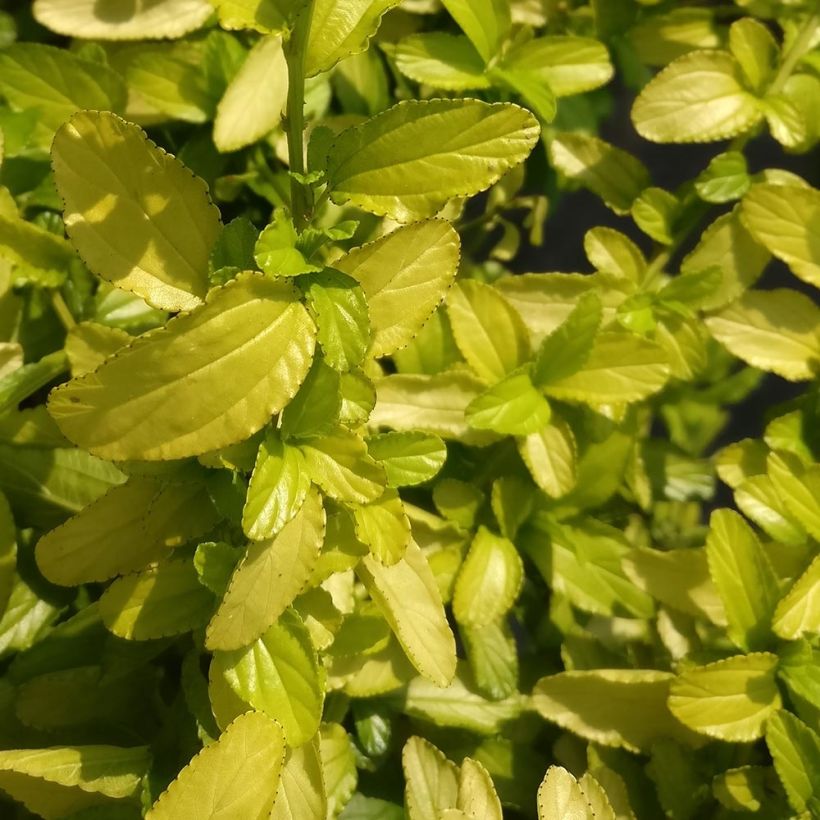

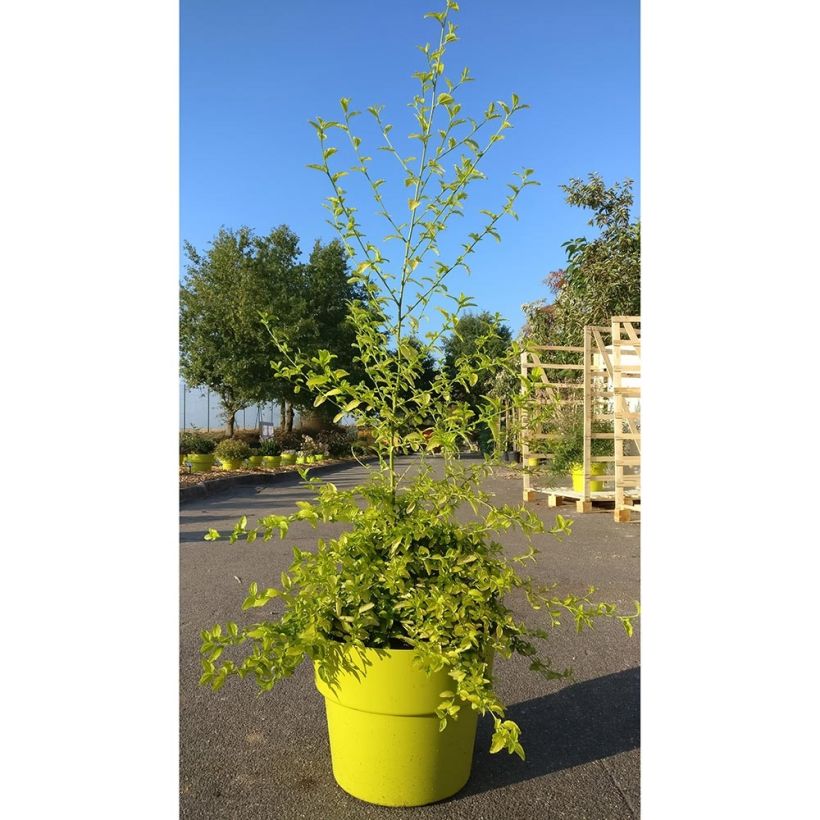

Plant habit
Flowering
Foliage
Botanical data
Ceanothus
x thyrsiflorus
California Love African Queen
Rhamnaceae
California Lilac
Cultivar or hybrid
Other Ceanothus
Planting and care
Place Ceanothus in a sunny or partially shaded position, in ordinary soil that should be moist in summer but must be well-drained. Beware of cold drafts which the bush does not like. It can be placed near a wall. Avoid chalky soils for this Africa Queen variety. Plant it all year round when frost-free, mixing your garden soil with compost, coarse sand, perlite or any material that does not retain moisture. Water generously once or twice a week to promote establishment. Water only twice a month from the third year onwards, and only in case of drought. It is a plant that requires very little maintenance and grows easily as long as the conditions are met. Constant moisture in the soil during the winter period, but also in summer in hot regions, is harmful to the plant. The combination of heat and humidity leads to the development of a fungus that attacks the collar of the plant and will be fatal to it. In regions affected by high summer temperatures, it is better to plant Ceanothus on a mound. You can lightly prune the stems after flowering to encourage the plant to branch out. Fertilizer is not recommended (just add a little bonemeal at the bottom of the planting hole). Avoid severe pruning.
Pot cultivation:
Use a lightweight substrate, a mixture of garden soil, coarse sand, and compost. In summer, water abundantly but only when the soil is dry, spacing out waterings. The plant can be stored in a cool and bright place, with little or no heating, protected from severe frost over winter. Apply a slow-release fertilizer in spring and autumn.
Planting period
Intended location
Care
This item has not been reviewed yet - be the first to leave a review about it.
Evergreen shrubs
Haven't found what you were looking for?
Hardiness is the lowest winter temperature a plant can endure without suffering serious damage or even dying. However, hardiness is affected by location (a sheltered area, such as a patio), protection (winter cover) and soil type (hardiness is improved by well-drained soil).

Photo Sharing Terms & Conditions
In order to encourage gardeners to interact and share their experiences, Promesse de fleurs offers various media enabling content to be uploaded onto its Site - in particular via the ‘Photo sharing’ module.
The User agrees to refrain from:
- Posting any content that is illegal, prejudicial, insulting, racist, inciteful to hatred, revisionist, contrary to public decency, that infringes on privacy or on the privacy rights of third parties, in particular the publicity rights of persons and goods, intellectual property rights, or the right to privacy.
- Submitting content on behalf of a third party;
- Impersonate the identity of a third party and/or publish any personal information about a third party;
In general, the User undertakes to refrain from any unethical behaviour.
All Content (in particular text, comments, files, images, photos, videos, creative works, etc.), which may be subject to property or intellectual property rights, image or other private rights, shall remain the property of the User, subject to the limited rights granted by the terms of the licence granted by Promesse de fleurs as stated below. Users are at liberty to publish or not to publish such Content on the Site, notably via the ‘Photo Sharing’ facility, and accept that this Content shall be made public and freely accessible, notably on the Internet.
Users further acknowledge, undertake to have ,and guarantee that they hold all necessary rights and permissions to publish such material on the Site, in particular with regard to the legislation in force pertaining to any privacy, property, intellectual property, image, or contractual rights, or rights of any other nature. By publishing such Content on the Site, Users acknowledge accepting full liability as publishers of the Content within the meaning of the law, and grant Promesse de fleurs, free of charge, an inclusive, worldwide licence for the said Content for the entire duration of its publication, including all reproduction, representation, up/downloading, displaying, performing, transmission, and storage rights.
Users also grant permission for their name to be linked to the Content and accept that this link may not always be made available.
By engaging in posting material, Users consent to their Content becoming automatically accessible on the Internet, in particular on other sites and/or blogs and/or web pages of the Promesse de fleurs site, including in particular social pages and the Promesse de fleurs catalogue.
Users may secure the removal of entrusted content free of charge by issuing a simple request via our contact form.
The flowering period indicated on our website applies to countries and regions located in USDA zone 8 (France, the United Kingdom, Ireland, the Netherlands, etc.)
It will vary according to where you live:
- In zones 9 to 10 (Italy, Spain, Greece, etc.), flowering will occur about 2 to 4 weeks earlier.
- In zones 6 to 7 (Germany, Poland, Slovenia, and lower mountainous regions), flowering will be delayed by 2 to 3 weeks.
- In zone 5 (Central Europe, Scandinavia), blooming will be delayed by 3 to 5 weeks.
In temperate climates, pruning of spring-flowering shrubs (forsythia, spireas, etc.) should be done just after flowering.
Pruning of summer-flowering shrubs (Indian Lilac, Perovskia, etc.) can be done in winter or spring.
In cold regions as well as with frost-sensitive plants, avoid pruning too early when severe frosts may still occur.
The planting period indicated on our website applies to countries and regions located in USDA zone 8 (France, United Kingdom, Ireland, Netherlands).
It will vary according to where you live:
- In Mediterranean zones (Marseille, Madrid, Milan, etc.), autumn and winter are the best planting periods.
- In continental zones (Strasbourg, Munich, Vienna, etc.), delay planting by 2 to 3 weeks in spring and bring it forward by 2 to 4 weeks in autumn.
- In mountainous regions (the Alps, Pyrenees, Carpathians, etc.), it is best to plant in late spring (May-June) or late summer (August-September).
The harvesting period indicated on our website applies to countries and regions in USDA zone 8 (France, England, Ireland, the Netherlands).
In colder areas (Scandinavia, Poland, Austria...) fruit and vegetable harvests are likely to be delayed by 3-4 weeks.
In warmer areas (Italy, Spain, Greece, etc.), harvesting will probably take place earlier, depending on weather conditions.
The sowing periods indicated on our website apply to countries and regions within USDA Zone 8 (France, UK, Ireland, Netherlands).
In colder areas (Scandinavia, Poland, Austria...), delay any outdoor sowing by 3-4 weeks, or sow under glass.
In warmer climes (Italy, Spain, Greece, etc.), bring outdoor sowing forward by a few weeks.

































